SEO Site Audit


What is it?
SEO site audit is the process of reviewing a website for SEO.
The aim in SEO site audit is:
- Understand current SEO Status.
- Detect major flaws.
- Find major opportunities.
- Create a list of action items for the upcoming period.
Why do it?
SEO is the best way to get good traffic for your website.
Yes, it can be hard sometimes. Harder than paid advertising. But once you conquer SEO, you get steady, natural and free traffic to your website. It is well worth all the hard work.
SEO work is endless. So, the purpose of the SEO audit is to focus the upcoming efforts on the most important issues.
How Long Does It Take?
SEO audit Shouldn’t take more than an hour on normal sites.
Our moto in the SEO audit is to follow the 80/20 rule. We want to create 80% of the value, which takes 20% of the time.
How often Should we Do SEO Audit?
I think that once a month should be good enough in most cases. But if you don’t do much SEO anyway, it could be less often. It all depends on how much efforts you’re willing to invest in SEO.
What Should be Done During an SEO Audit
Generally, we need to create an overall assessment of our SEO status and pinpoint the biggest opportunities. We are not going to resolve the issues we find.
So, for example we should end up with a general picture of our progress. A list of 7-8 keywords that we know we should focus on in the upcoming month. A list of sites that we will try to get backlinks from. Finally, 8-10 SEO issues/errors that could be easily addressed immediately.
We can break it to simple 5 steps and divide an hour between them:
- Analyze current SEO status and detect major flaws – 15 minutes
- Check rankings – 5 minutes
- Analyze backlinks – 10 minutes
- Find SEO Issues – 15 minutes
- Find keyword opportunites – 15 minutes
Now, let’s see the details…
Analyze Your current SEO Status and Detect Major Flaws
The first thing we to do is open Google Search Console. It is a great tool for SEO.
Why Not Use Google Analytics? – Not Provided Issue
The problem with google analytics (and any other traffic monitoring
software) is that it doesn’t show organic traffic anymore!
See here
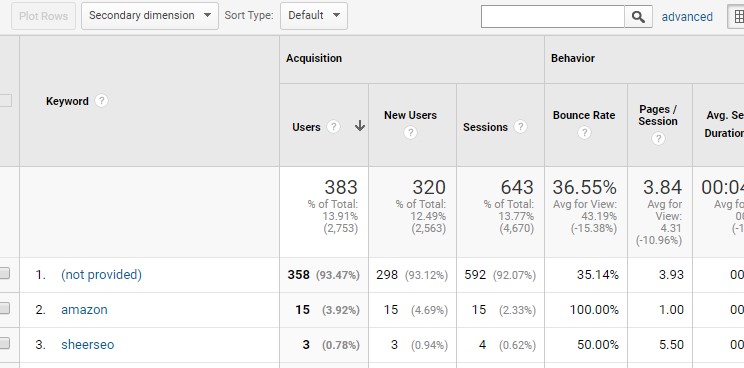
Most of our traffic from Google will be hidden under this “not provided” section. So, that is why only google search console can uncover this blurred information.
Google Search Console will require you to verify that you have admin rights for this website. So, if you don’t have such rights for the website, I’ll provide alternatives.
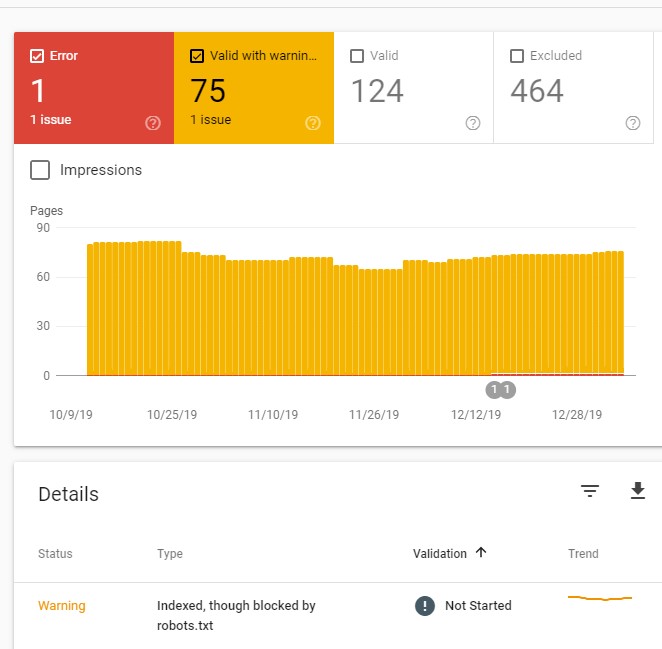
First thing to check is index coverage. If there are pages that Google
can not crawl, they will not show up in any Google results.
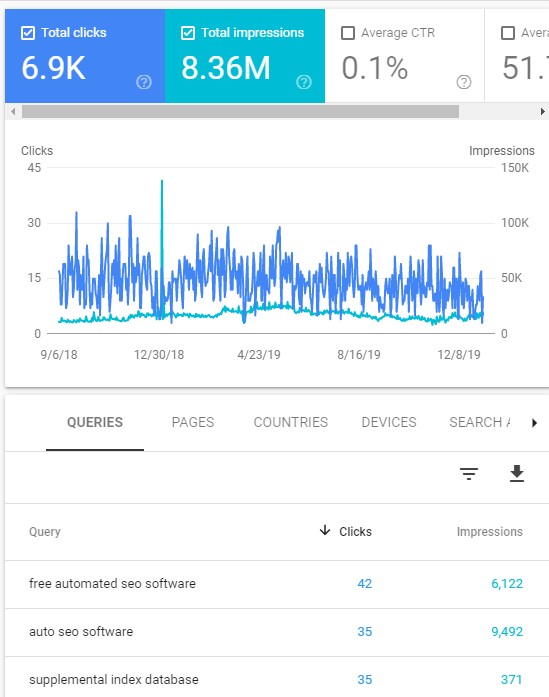
Next, we can look at the performance of our keywords
We can filter by pages, keywords and countries to get more data.
What if we don’t have permissions for the Google Search Console? We will have to rely on Google Analytics, which will show just some of the keywords from organic search, and we will use a rank tracking software, to get the rest of the data.
SEO Ranking software can give you nice graphical overview of your SEO performance.
Here is how it looks like in sheerseo:
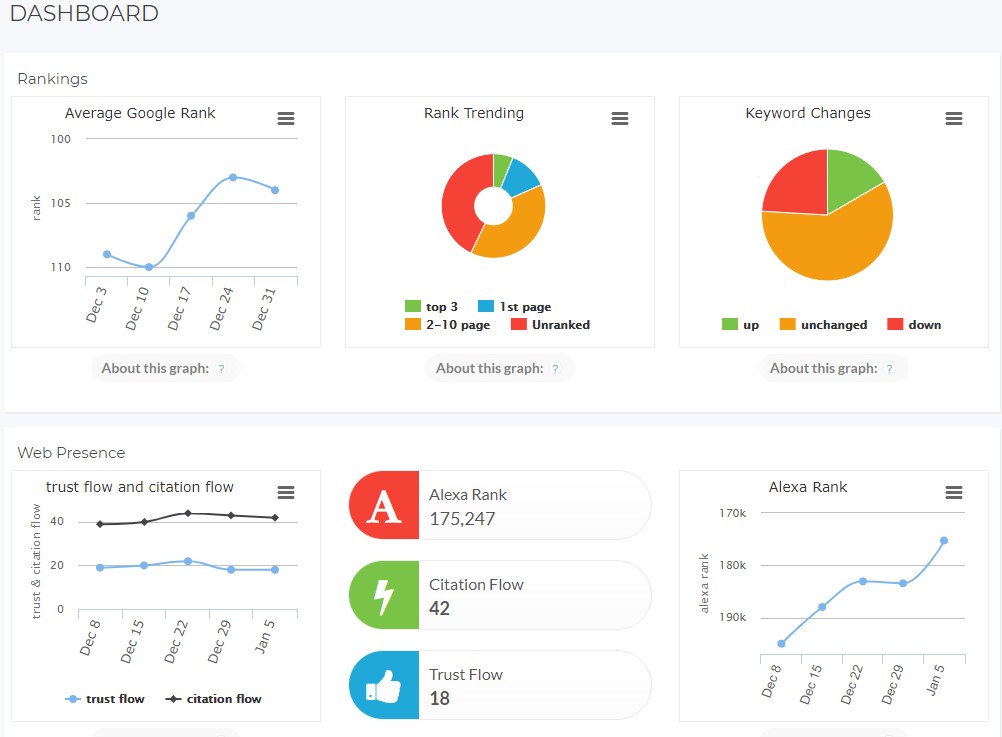
So that could also be a nice way to view your SEO status.
After we finished analyzing our SEO status, we need to go a little further with rank tracking.
Rankings
Every SEO work will require some rank tracking. You must measure your progress for the main keywords you focus on.
Rank tracking software is comfortable, and it is probably a must for every SEO work.
Here is how the rank tracking looks like on sheerseo
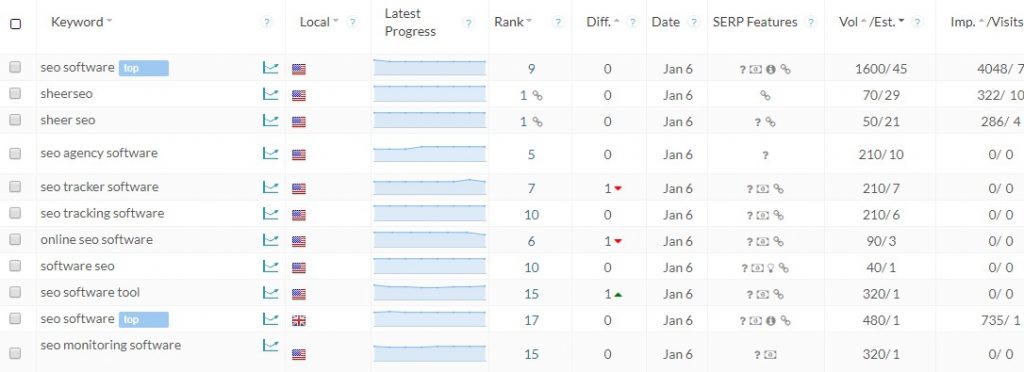
Here, we can not only view the ranks for our keywords, but we can also associate that data with:
- Latest progress.
- SERP features – the features that exist for that keyword in Google (like search snippet, knowledge panel and local results), and if our own website appears in any of those features.
- Search volume – the amount of Google searches done monthly for that keyword.
- Estimated clicks – an estimation of the amount of clicks the keyword will get for that keyword. Based on the rank and search volume.
- Impressions & Visits – the number of times your page was seen and clicked on Google for this keyword.
So, you probably get the idea, how this could get you an assessment of your current SEO status.
Backlinks Analysis
Backlinks are a critical asset in SEO. They are the building block of Google’s algorithm. We need to figure out where we are in that aspect if we want to get any SEO results.
I recommend using MajesticSEO. But other alternatives would be ahrefs and moz. All of those solutions scan all the internet and find backlinks. The problem with them is that they are limited in usage and will cost a lot per month.
Another way of doing this would be to use one of the all in one SEO softwares, like sheerseo, where those will use one of the big site explorers mentioned above. We use MajesticSEO.
So, first step is to simply view your overall backlinks status. Here is how it looks like in MajesticSEO
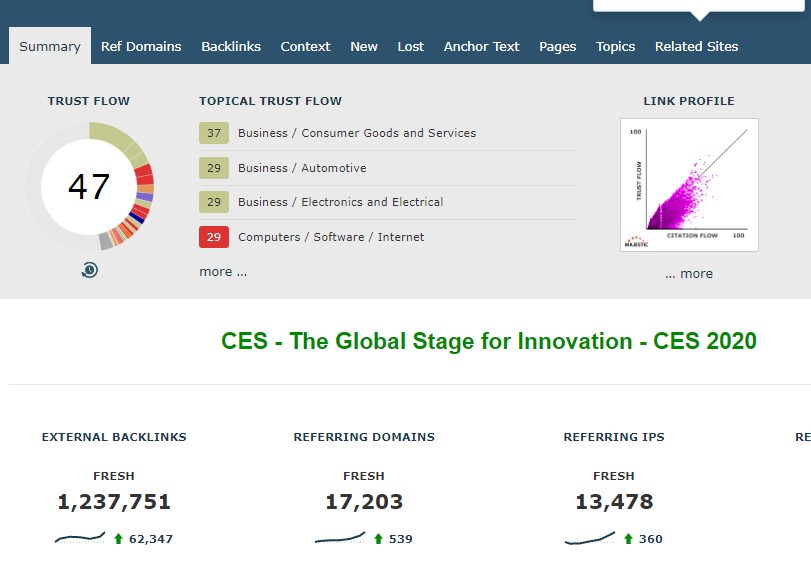
Few critical things to check in terms of backlinks, during your SEO audit are:
- New backlinks – find which new backlinks were added lately to your site.
- Find dropped backlinks! – We want to know which backlinks dropped. Maybe we worked very hard on building those backlinks, so we need to know about that and maybe, we will be able to restore them.
- Guard your most precious backlinks – Some of your backlinks are critical. Those should be well guarded. You might have paid for them or had an agreement for them. I suggest you use a special tool to check on those links every day. We can’t afford to lose such links without knowing.
Here is how our tool checks them. We call it the backlinks checker
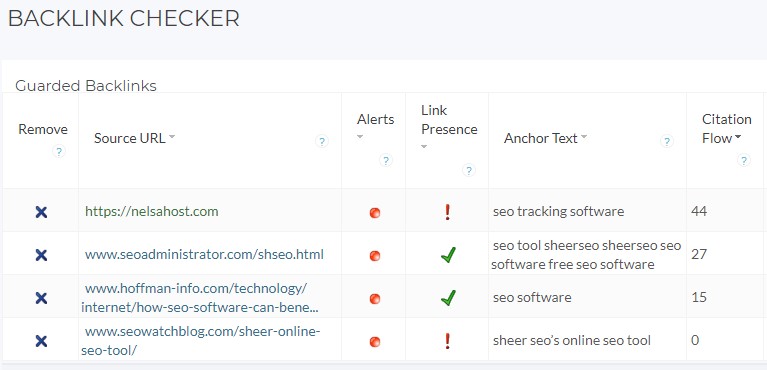
Checking for Link opportunities
We need to see if there are link opportunities we can use. For that, we can check on our competitors, and see if they have some backlinks from domains we can try also approaching.
That can be accomplished by using one of the link explorers, or again an SEO software that has access to such tools.
Finding SEO Issues
There are general guidelines for SEO. Things like, using titles, H1, having enough content, and avoiding broken images and links. It is useful to check those guildelines and fix during an SEO audit.
I wouldn’t spend too much time on fixing all issues, because usually there might be tons of them. I would rather focus on the critical stuff.
To pinpoint your SEO issues, you should use an SEO audit software. Luckily, you can find some free solutions these days. Like Screaming Frog and sheerseo site audit
Here is how a typical screen will look like on your SEO audit
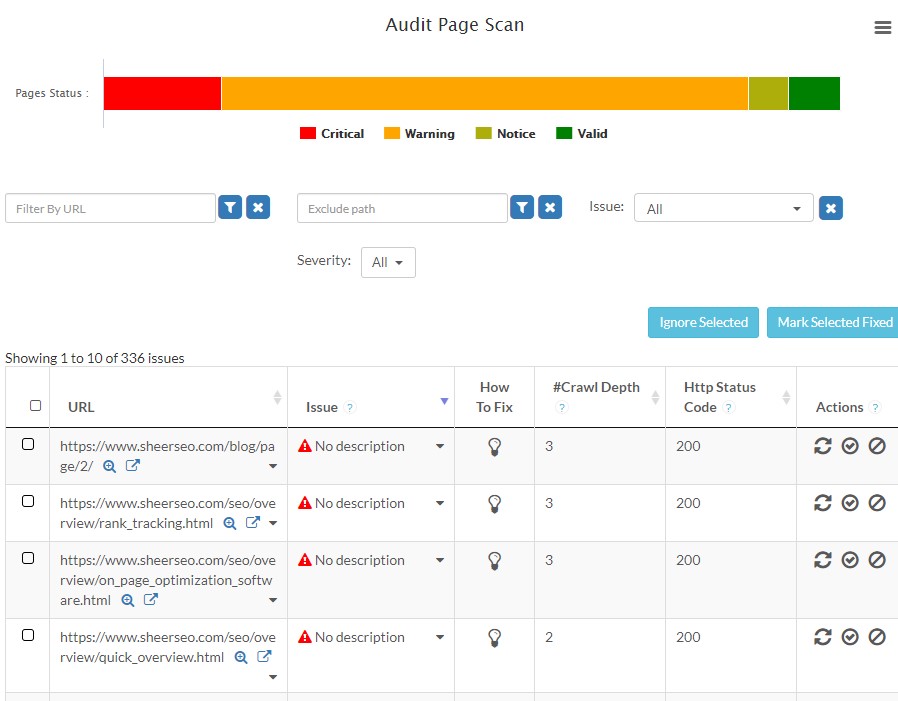
As you can see, our own website has 336 SEO issues. It is critical that you can find the critical stuff and focus on that.
Targets Assessment
OK, at this point of the SEO site audit, we know where we are, and we managed to find some issues that needs fixing.
Now, as the final part of the SEO audit, you should focus on building your keyword target list. This is because on every moment, you need to have a keyword list, that you are going to target in the next period.
Depending on the time you can devote to SEO, it could be just 3-4 keywords, or 20. You should plan carefully on which keywords you want to spend your resources on.
Those keywords could be either new keywords or existing keywords that need more love and attention.
Finding New Keywords
Three ways you can find new keywords:
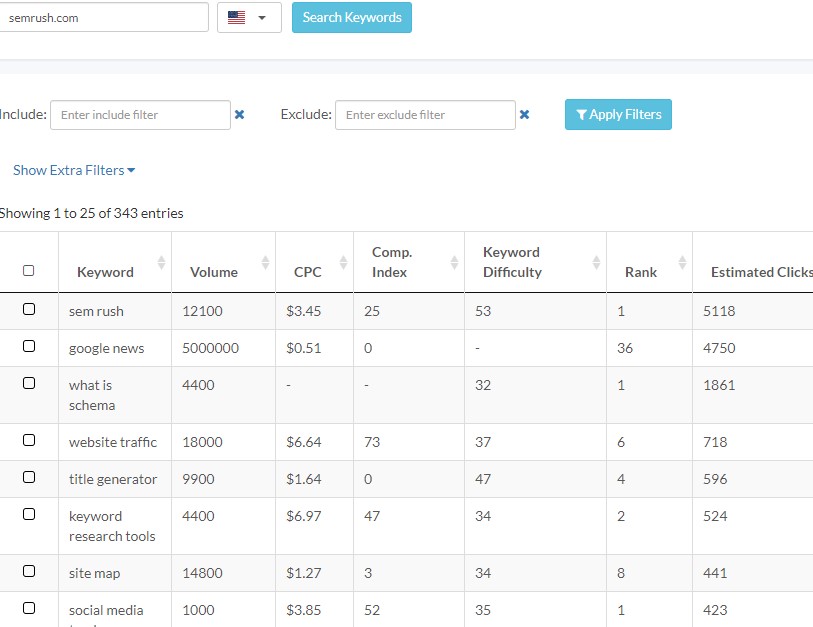
- From your competitors. Check
a competitor and see where he gets his traffic from. Here is an example from
our Keyword explorer
You should make sure you choose the keywords that provide enough traffic but are also not too hard to rank for. - Find keyword suggestions for a given keyword. You start with a given keyword and find keywords that contain that keyword, or words from that keyword.
- Use Google Keyword
planner to get suggestions. Note that you’ll need a paying Adwords account
to be able to use it properly.
Find Keywords That Could Use Some Love and Attention
You can watch your rankings and find the keywords that are now ranked 11-20 (second page) and pick some of them. With little changes in either content or another backlink, even from your own site, you might be able to get them up to page one.
Now, where should you maintain your SEO targets? Your head might be a
good answer. But if you are like me, you better write it somewhere. We provide a
feature we call “Optimization Targets”, where we manage all those targeted keywords.
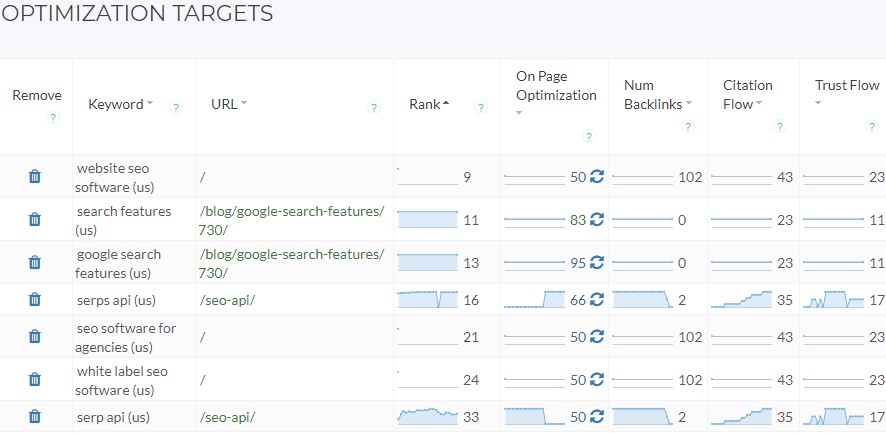
We show some more useful information next to each target keyword, like its’ current ranking and some metrics regarding the On-Page SEO and Off-Page SEO for that page.
Conclusion
We should do SEO site audit every month or so.
It should not take more than an hour.
It should:
- Give us an overall status of our SEO.
- Find major flaws like errors and site coverage.
- Assess keyword rank status.
- Provide backlink analysis.
- Spot critical SEO issues.
- Update SEO targets, so we have action items for our next period.
Hope this helps

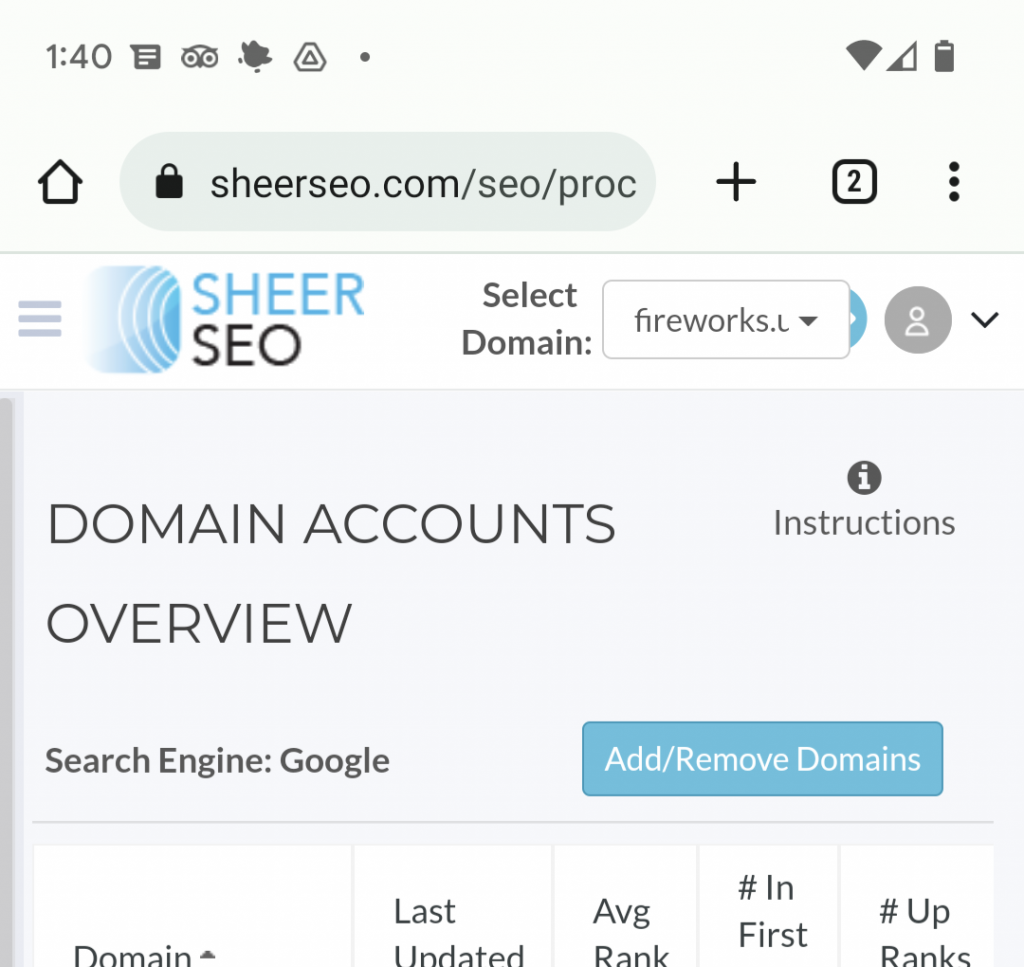
For digital marketing, SEO auditing is a significant feature of a website. The SEO audit is an in-depth review of a site, assessing the efficiency of activities on and off-page, detecting web design problems, reviewing backlinks and social media engagement, testing keyword density, and investigating double-content issues. SEO audit is important in the simplest sense in order to recognize the vulnerabilities, strengths, and potential of your website.
I need help for seo final report project for seo Cours